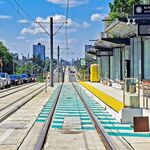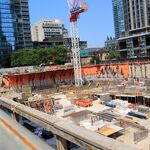The largest vacuum system in the world
With a total of 104 kilometres of piping under vacuum, the vacuum system of the LHC is among the largest in the world. The insulating vacuum, equivalent to some 10-6mbar, is made up of an impressive 50 km of piping, with a combined volume of 15,000 cubic metres, more than enough to fill the nave of a cathedral. Building this vacuum system required more than 250,000 welded joints and 18,000 vacuum seals. The remaining 54 km of pipes under vacuum are the beam pipes, through which the LHC's two beams travel. The pressure in these pipes is in the order of 10-10 to 10-11 mbar, a vacuum almost as rarefied as that found on the surface of the Moon. The LHC’s vacuum systems are fitted with 170 Bayard-Alpert ionisation gauges and 1084 Pirani and Penning gauges to monitor the vacuum pressure.





